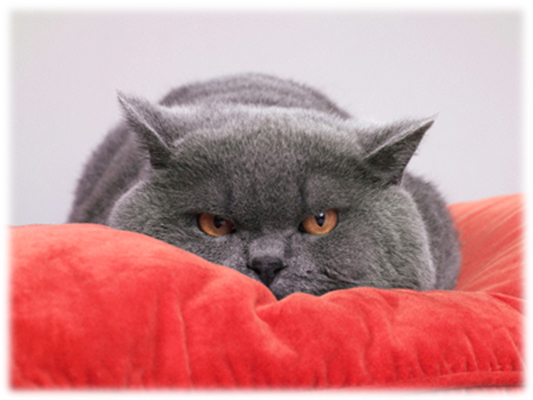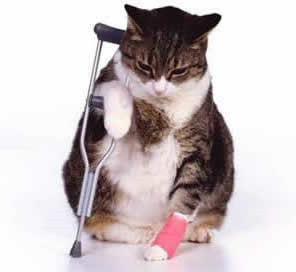Arthritis in cats can be difficult to pick. Owners commonly assume that a decrease in level of activity of their cat is a natural occurrence due to ageing. Previously, it was believed that arthritis was uncommon in cats. However, recent radiographic evidence suggests that this is not the case. We now know that arthritis is common in cats, particularly the elderly population. Although the changes may be subtle, many cats suffer from arthritic pain, which can reduce mobility and activity levels.
In contrast to dogs, which show a variety of easily identifiable symptoms, cats are stoic and rarely show many obvious signs that they are suffering. Read on for the 8 most common signs of pain caused by arthritis in cats…

- Unwillingness to jump
If your cat used to jump easily onto and off of your countertop, table, or bed but is now unwilling, hesitating or reducing the height he is prepared to leap, his loss of confidence could be the result of painful joints. Jumping and landing require the joints to absorb the concussive force of the cat’s body weight and places significant stress on the joints. Difficulty jumping up and down from high surfaces is the most common indication that your cat is suffering from arthritic pain.

- Moving slowly and stiffly Often, cats with arthritis become less active, which is easily mistaken for “laziness” as a cat ages. If you’ve noticed a change in your cat’s behaviour, he may be in pain due to arthritis. Your cat may show no other symptoms than being a little slow and stiff in the way he moves. This may indicate low-grade arthritic pain, which can be alleviated, returning your cat to his former athletic self.

- Irritability
When a cat is suffering from painful joints he may be less tolerant of people and other cats. He may cry when picked up, growl, scratch or bite even though this behaviour may seem out of character for him.

- Less play You might notice that your cat is less motivated to race around the house like a mad thing, jump off the walls or furniture or just goof around. This may be associated with stiffness and loss of mobility that occurs when joints suffer wear and tear, resulting in arthritic pain.

- Lame/limping Lameness in cats is uncommon because cat arthritis typically develops bilaterally in the hips and/or shoulders. However, if you have noticed that your cat is moving unevenly, favouring one leg, and/or his head is bobbing as he trots. This could be an indication that the joints in a particular leg are causing the cat arthritic pain.

Sadly, arthritis is not a curable disease. However, there are products and actions you can take to minimize further degeneration and ease the pain that your best furry friend experiences.
Joint Rejuvenate is a high-grade pure green lipped mussel powder recommended by Veterinarians for the treatment of arthritis in dogs, cats and horses. For further information, visit www.arthritistreatments.com.au






